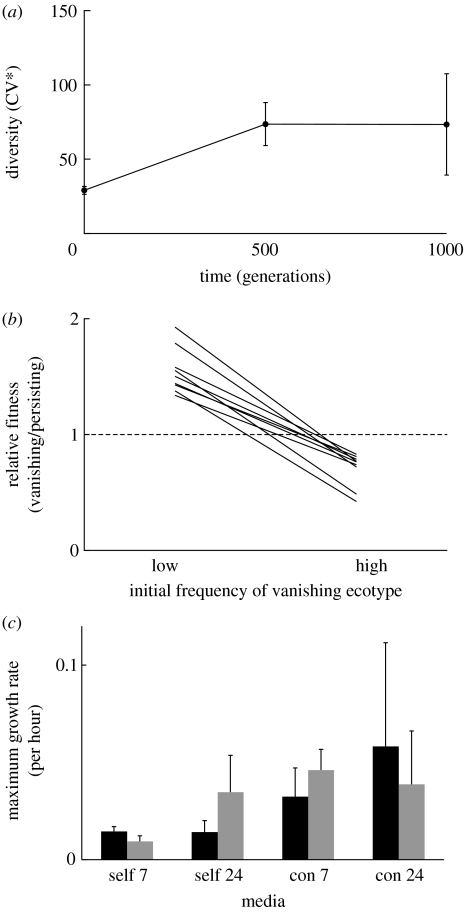Figure 1.
Diversity evolved and persisted in the mass action liquid environment. (a) Colony size variation within microcosms evolved over the course of the selection experiment, as shown by the increase in average coefficient of variation for colony size (CV*) across microcosms (mean with 95% CI). Phenotypic diversity increased during the first 500 generations (F1,29=38.36, p<0.0001), without a significant change between generation 500 and 1000 (F1,59=0.0013, p=0.971). (b) Stabilizing frequency dependence between the persisting and the vanishing ecotype occurred in the well-mixed environment. Relative fitness of the vanishing ecotype was high at low initial frequency and low at high initial frequency (p<0.0001, paired t-test). Lines connecting the fitness values at low and high frequencies all cross the dashed line where both competitors have equal fitness. (c) Growth rate of the two ecotypes in DM+Glu and in media depleted for 7 or 24 hours by self or by the conspecific (averages with 95% CI). The maximal growth rate was measured over a 24-hour growth cycle for both the persisting (black bars) and the vanishing (grey bars) ecotype. In media depleted for 24 hours, the ecotypes did not differ in growth rate. In media depleted for 7 hours, we observed a significant effect of environment (media depleted by self or conspecific: F1,104=29.84, p<0.0001), with a significant interaction term between environment and ecotype (F1,104=6.96, p=0.0096).

